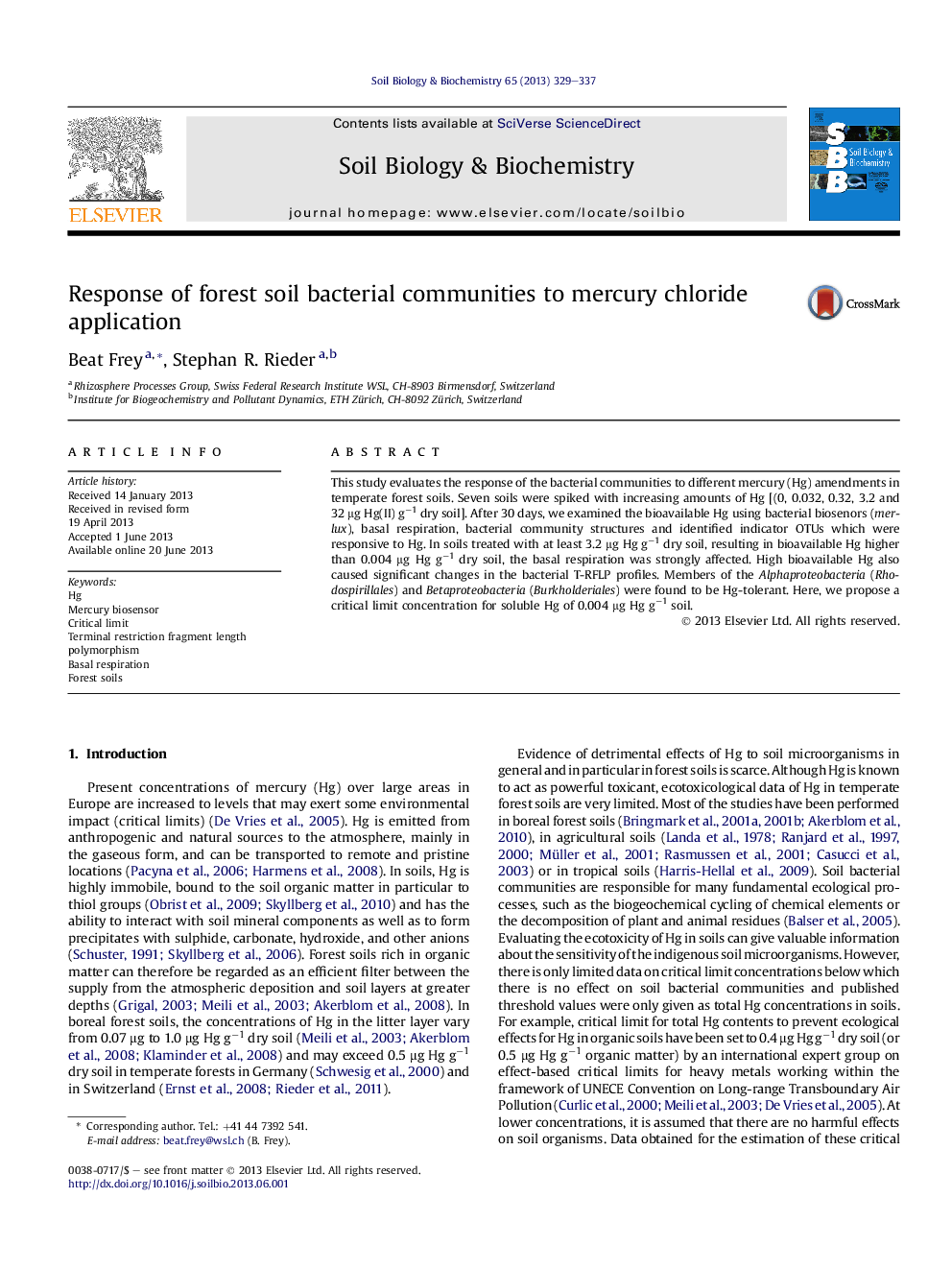| Article ID | Journal | Published Year | Pages | File Type |
|---|---|---|---|---|
| 8365230 | Soil Biology and Biochemistry | 2013 | 9 Pages |
Abstract
This study evaluates the response of the bacterial communities to different mercury (Hg) amendments in temperate forest soils. Seven soils were spiked with increasing amounts of Hg [(0, 0.032, 0.32, 3.2 and 32 μg Hg(II) gâ1 dry soil]. After 30 days, we examined the bioavailable Hg using bacterial biosenors (mer-lux), basal respiration, bacterial community structures and identified indicator OTUs which were responsive to Hg. In soils treated with at least 3.2 μg Hg gâ1 dry soil, resulting in bioavailable Hg higher than 0.004 μg Hg gâ1 dry soil, the basal respiration was strongly affected. High bioavailable Hg also caused significant changes in the bacterial T-RFLP profiles. Members of the Alphaproteobacteria (Rhodospirillales) and Betaproteobacteria (Burkholderiales) were found to be Hg-tolerant. Here, we propose a critical limit concentration for soluble Hg of 0.004 μg Hg gâ1 soil.
Keywords
Related Topics
Life Sciences
Agricultural and Biological Sciences
Soil Science
Authors
Beat Frey, Stephan R. Rieder,
